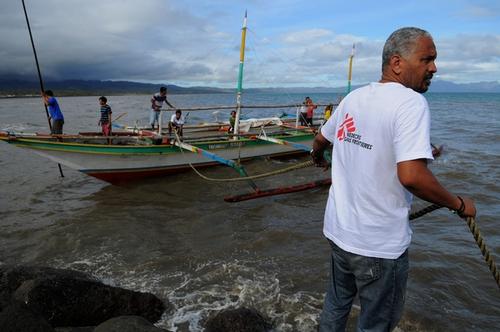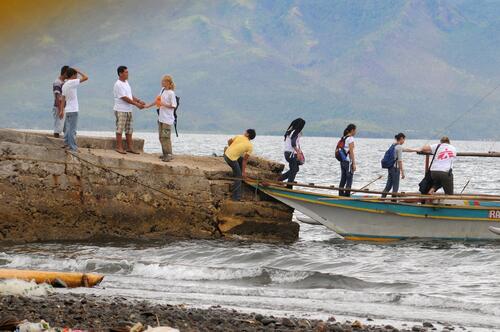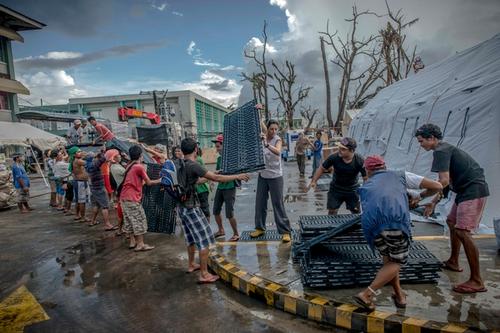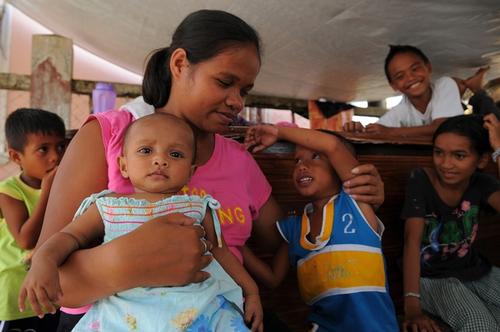One month after Typhoon Haiyan swept through the central Philippines, Filipinos are starting to rebuild their homes and lives, says Médecins Sans Frontières (MSF) emergency coordinator Ibrahim Younis. But while people in cities are receiving assistance, says Younis, many remote farming communities have still received little aid.
One month on, have people received the assistance they need?
Humanitarian aid is still not reaching the villages as it should. Much of the relief effort is focused around coastal cities, such as Tacloban, the ground zero of this disaster. But aid is still not really reaching areas outside the urban centres. This is increasingly worrying, as the situation in remote areas gradually becomes more and more critical. We are still in the wet season, meaning that it rains a lot, and we’re concerned about people’s health.
But aid is still not really reaching areas outside the urban centres. This is increasingly worrying, as the situation in remote areas gradually becomes more and more critical.Ibrahim Younis

How bad is the situation in remote areas?
According to the medical indicators, we’re not yet in an alarming situation. We’ve heard rumours of severe malnutrition and of high rates of diarrhoea in certain areas. We are investigating these reports, but so far our screenings have shown that morbidity rates are no higher than before the typhoon. But the longer that remote communities are cut off from humanitarian aid, the more likely it is that people’s health will be affected.
What is MSF doing to help people?
MSF teams are working in a number of places, running hospitals and mobile clinics amongst other things. The mobile clinics are focused on visiting remote villages, where they provide basic healthcare to people who have received little or no assistance so far. Very sick patients are referred to our hospitals – for example to the inflatable hospital which we have set up in Tacloban city.
We are also supporting health centres which have been damaged or which can’t cope with the number of patients seeking medical attention, and are donating drugs and medical equipment where needed.
Our psychosocial teams are focusing on providing mental healthcare, and our water and sanitation experts are distributing clean water, both to local people and to damaged health centres.
In our mobile clinics, we are seeing many patients with chronic diseases, such as hypertension, diabetes and cardiac conditions. Health centres in remote areas rely on drug deliveries from Tacloban and other major towns, but this supply system has been disrupted, so drugs are not reaching the people in these areas. MSF is maintaining the drug supply for these people.
Is MSF delivering relief supplies?
Our teams are distributing essential relief items such as shelter materials, hygiene kits, cooking utensils, blankets and mosquito nets, with a focus on remote villages that have been completely destroyed. Most of these areas are homes to poor farming families. These communities are not as robust as those in towns, and so the vulnerability in these areas is much higher.
When we go to a village, we distribute relief items to all of the households. Because many people’s homes have been destroyed, we are also handing out ʻreconstruction kits’, which include plastic sheeting, hammers, nails and other tools, to help people build themselves temporary shelters until they have long-term solutions for reconstructing their homes.
How are Filipinos coping in the aftermath of the disaster?
Let me give you an example: When you arrive by boat in the heavily damaged city of Ormoc, you can see a big sign. It says: “Roofless, homeless, but not hopeless.” That gives you an idea of the spirit of the Filipino people. You have to bear in mind that people here are used to natural disasters, although this typhoon was bigger than anybody had expected.
For how long will people need aid?
Reconstruction after the typhoon is going to be a huge, long-term challenge. As an emergency medical organisation, we are looking at a shorter timespan – maybe between three and six months, depending on the needs. Compared to many other places we work in, the Philippines is quite a developed country, with a functioning healthcare system and enough manpower to run it. What we are doing now is filling the gap until the authorities are able to take over again.






